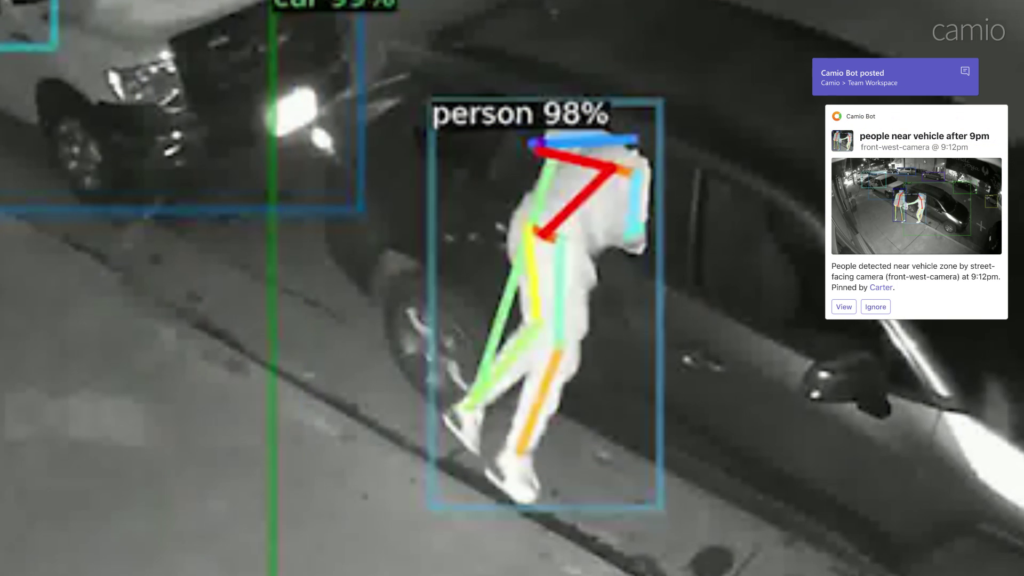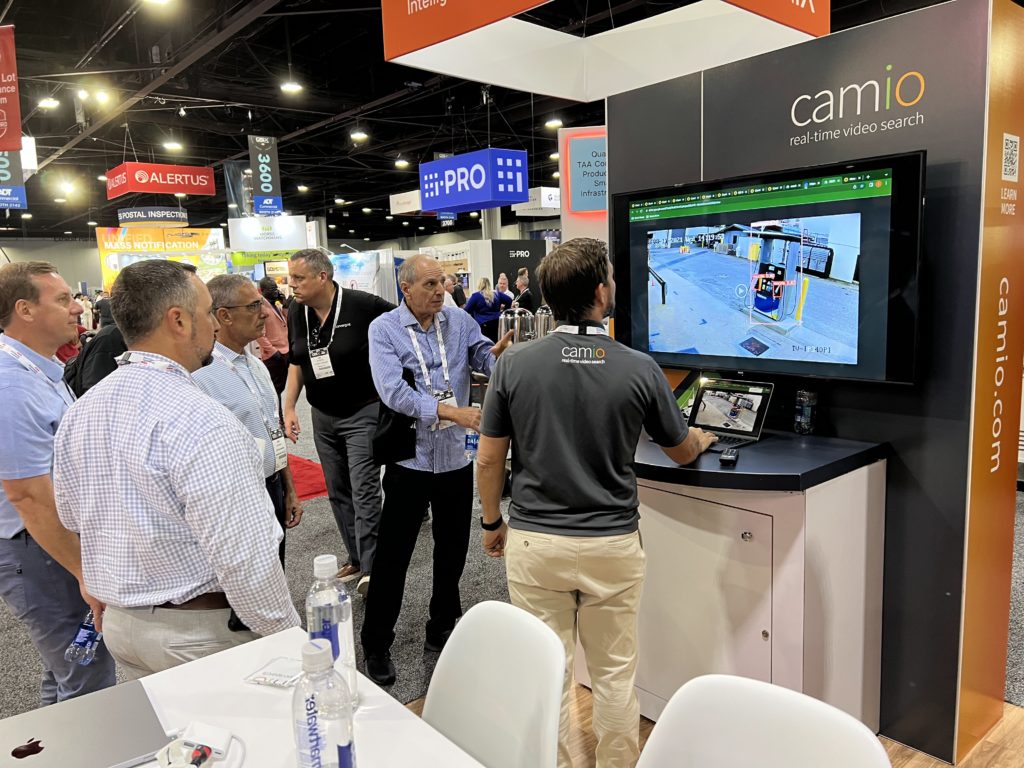SIA New Member Profile: Camio

Security Industry Association (SIA) member Camio is the search engine behind cost-effective video surveillance. It connects any camera to state-of-the-art machine learning to power modern video monitoring solutions with the efficiency and flexibility advantages of hybrid edge/cloud SaaS. The company is headquartered in San Mateo, California, and serves customers across 35 time zones.
SIA spoke with Carter Maslan, founder and CEO of Camio, about the company’s history and offerings, the security industry and working with SIA.

Tell us the story of your company.
Carter Maslan: We came from Google, and noticed that every Street View usability study included a person that thought the images were real-time (e.g., “why isn’t my car parked at home? I left it there this morning”). That experience inspired us to ask why we can search the entire Web in 50 milliseconds but can’t find anything in video without tons of hunting and pecking? Camio uses natural language video search, advanced AI and standard IP cameras to recognize what’s important and alert security and management teams in real time.

What solutions/services does your business offer in the security industry? And what makes your offerings/company unique?
CM: Natural language video search that works real-time is uniquely good at pushing the events that matter to the people who need to see them. With the increased cyber liability and compliance requirements like SOC 2, PCI DSS, and HIPAA, customers use Camio to light up their existing cameras to detect unauthorized access—including tailgating and DHO and DFO with inbound people—and remotely monitor 50 times more locations with the same staff.
From an infrastructure perspective, Camio runs on Kubernetes even on-prem for cloud-native reliability, cybersecurity, scale, and performance advantages. With Bring Your Own Storage (BYOS)—customers retain complete governance control while also using their own committed use discounts on storage.
What’s something we might not know about your company – or something new you’re doing in security?
CM: Not everyone may know how fast Camio launches new capabilities. Camio applies AI at every stage of the video processing pipeline spanning edge and cloud, and so, we’re able to create and deploy new services quickly and economically. For example, we launched social distancing and mask detection within 3 weeks of the COVID-19 outbreak and deployed in 14 countries — protecting employees and avoiding shutdowns that would have cost some companies millions of dollars in lost revenue even if the shutdown lasted only a few days.
What is your company’s vision, and what are your goals for the security industry?
CM: We want to enable the security industry to move from evidence collection for forensics to proactive responses that truly secure people and property. While Camio speeds investigations, it’s designed for real-time threat detection and incident response. Let’s give security teams the tools to deliver more effective and efficient security with meaningful interventions and data insights into their layered defenses.
What do you think are the biggest opportunities in the security industry right now?
CM: To convert all our security systems into action and insights. We’re finally able to put machines to work with AI to augment human attention and incident detection. For the first time, it’s economically feasible to protect with real-time responses. Locks and cameras alone don’t protect. It takes active monitoring. And CFOs can now look at the protective value of their security programs in dollars per monitored hour.

What are your predictions for the security industry in the short term and long term?
CM: Short term, the vertically integrated proprietary solutions will deliver some quick usability wins. But long term, the advances in IT ecosystems like Kubernetes will accelerate with such a compounding effect that the security industry will look a lot more like the IT industry. The best solutions will be so much faster and more responsive to customer needs because they’re harnessing all the advances in ecosystems with billions of dollars of investment and brainpower behind them.
What are the biggest challenges facing your company and/or others in the security industry?
CM: “Scorched earth” marketing. Vendors have over-promised and under-delivered for decades. Customers are overwhelmed with a confusing array of choices all using similar language to describe their offerings. Some vendors have made AI claims that either aren’t true or don’t deliver the necessary quality. That has created buyer confusion and distrust. End users need to have a basic understanding of AI and its characteristics like precision and recall in order to make informed decisions in a cacophonous market. That’s a big education burden on both vendors and end users.
What do you enjoy most about being at your company – and in the security industry?
CM: Creating solutions that weren’t possible before. Innovating at the nexus of people, process, technology and the real world. There’s a whole new class of software solutions that will see and understand the real world to provide safety, security and data insights.
What does SIA offer that is most important to you and your company? And what do you most hope to get out of membership?
CM: We’ve seen the importance of engaging directly with our partner integrators and solution providers. We look forward to contributing to SIA. As demands on the security industry escalate, it’s the collaboration among partners that will drive the industry forward.
How does your organization engage with SIA? What are your plans for involvement in the next year (e.g., events, accessing member resources)?
CM: Our primary objective is to educate ourselves and our partners on the transformative opportunities ahead in using the latest advances in AI.
The views and opinions expressed in guest posts and/or profiles are those of the authors or sources and do not necessarily reflect the official policy or position of the Security Industry Association.
